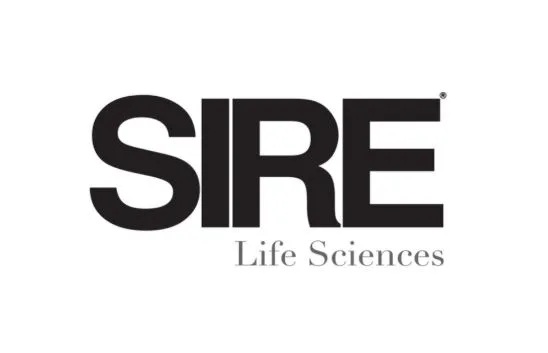BSNFinance Enhances Risk Management Models for Dynamic Market Environments
In 2025, portfolio resilience has become the defining feature of successful asset management. With increased market fragmentation, rate divergence, and geopolitical unpredictability shaping investor behavior, BSNFinance has announced a major enhancement of its internal risk management framework — positioning the firm to meet the evolving needs of private and institutional clients in a volatile global environment.
The refined model introduces deeper scenario mapping, broader cross-asset simulations, and faster response mechanisms across the firm’s managed portfolio strategies. These upgrades are aligned with the current demand for asset safety, forward-facing volatility coverage, and strict regulatory compliance across borders.
Responding to the New Risk Reality
Global markets have entered a phase marked by structural dislocations. The classic 60/40 model has struggled under inflationary pressure, yield curve inversions, and rotation between equity growth and value segments. Against this backdrop, traditional backward-looking risk metrics have proven insufficient.
BSNFinance responded by overhauling its approach to risk controls. The newly implemented models move beyond static measures such as trailing volatility or Sharpe ratios. Instead, the firm applies predictive risk analytics built on forward-looking macro scenarios, enabling portfolio managers to simulate outcomes across:
- Monetary tightening cycles
- Supply-chain disruptions and sector-specific shocks
- Emerging market liquidity events
- Currency divergence between USD, EUR, and GBP
- Rate sensitivity and credit spread expansions
This approach allows BSNFinance to anticipate not only potential losses, but also the correlation breakdowns that can lead to systemic drawdowns during market stress.
Multi-Layered Risk Controls Embedded in Portfolio Construction
The new framework integrates risk discipline directly into portfolio assembly, rather than treating risk as a post-hoc adjustment. This includes:
- Asset-level stress testing with exposure-based thresholds
- Volatility-adjusted position sizing for high-beta instruments
- Liquidity profile indexing, ensuring exit capability in fast-moving markets
- Cross-asset shock absorption modeling, useful in hybrid portfolios
- Tail-risk buffers, especially for high-net-worth and institutional mandates
Every strategy offered by BSNFinance now includes real-time risk dashboards and automated deviation triggers — giving clients and advisors enhanced visibility and control over portfolio exposure under adverse conditions.
Institutional-Grade Risk Frameworks for Private Wealth Clients
While institutional portfolios have long benefited from detailed risk infrastructure, BSNFinance is bringing that same level of control and transparency to private client strategies. This includes:
- Custom risk profiling by individual or family office entity
- Asset-liability matching for long-term goal alignment
- Jurisdiction-aware compliance overlays, including MiFID II, SFDR, and FATCA
- ESG-integrated risk filters, responding to client mandate preferences
- Rebalancing logic based on dynamic volatility thresholds, not fixed timelines
For globally exposed investors, especially those operating across multiple domiciles or managing intergenerational wealth structures, these tools offer a much-needed layer of precision and governance.
Strengthening Oversight During Macro Regime Shifts
The reengineering of BSNFinance’s risk models arrives at a time when macroeconomic transitions are accelerating. Central bank policy is no longer synchronized, inflation remains persistent in key regions, and geopolitical risk has become embedded in commodity and currency markets.
In response, BSNFinance has added an internal Risk Intelligence Unit responsible for:
- Monitoring regime shifts and early indicators of market dislocation
- Creating proprietary risk heatmaps updated weekly
- Coordinating with portfolio teams to recommend hedging or de-risking actions
- Simulating counterfactual scenarios for decision-making confidence
- Supporting client-side education and documentation for oversight boards
These insights are integrated directly into the firm’s asset allocation committee processes — ensuring that every decision is filtered through a multi-perspective risk lens.
Platform-Level Integration for Consistency and Transparency
Risk controls are only as effective as their implementation. BSNFinance’s models are deployed across all client-facing platforms, meaning that:
- Portfolio snapshots reflect real-time risk-adjusted views
- Alerts and deviations are triggered on client dashboards
- Custom limits can be set by client or advisor discretion
- Compliance reporting includes full risk profile disclosures per mandate
This platform-driven integration ensures that every strategy — whether income-focused, growth-oriented, or defensive — operates with uniform risk logic and transparent accountability.
Outlook: Risk Management as a Strategic Asset
As the financial landscape continues to shift in 2025, firms that treat risk management as a dynamic, evolving process — rather than a static compliance obligation — will define the next era of client trust. The enhancements at BSNFinance reflect this strategic understanding.
Clients today are not only asking “what can I earn?” — they are asking “what can I lose, and when will I know?” Through this recalibrated approach, BSNFinance offers them a framework to answer those questions with confidence.
Disclaimer:
This article is provided for informational purposes only. It does not constitute investment advice, legal counsel, or a solicitation of services. All investments involve risk, including the potential loss of capital. Past performance is not indicative of future results. Investors should consult with qualified financial professionals before making investment decisions.




